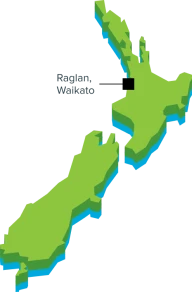AgResearch is working with partners to develop a framework in a number of areas of the circular system. The first steps in such analysis is to determine the goals of key stakeholders, the boundaries of the system and the flow of materials through the system.
Farm scale assessment
AgResearch has developed a farm scale circularity assessment framework using a dairy farm as a case study. Resource circularity indicators were applied for nutrients, plastic and fossil fuels along with a carbon footprint. This framework can be adapted for other farm systems and other resources such as water. It has also been used to compare different sheep and beef farm classes to determine nutrient circularity at different levels of intensification.
Supply chain assessment
AgResearch has expertise in Life Cycle Assessment (LCA). This includes assessing all impacts of production at scale. In addition to completing carbon footprints for a range of stakeholders in the dairy and red meat sectors, the team has explored water and nutrient footprints.
A cradle-to-grave dairy supply chain assessment has been undertaken using a case study of a New Zealand dairy supply chain, comparing business as usual with changes to:
- cow feed supplements
- energy sources for milk processing
- milk packaging
- directing packaging waste to recycling
